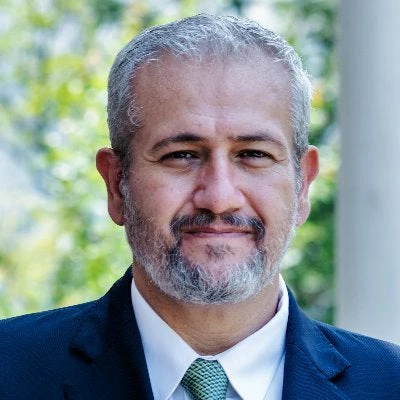 A newly-built house in Nepal
A newly-built house in Nepal
In 2015, Nepal was facing an almost insurmountable challenge. The April 2015 earthquake upended the lives of 8 million Nepalis—nearly a third of the population. It claimed nearly 9,000 lives, injured more than 20,000 people, caused more than $7 billion in physical damages, and pushed nearly 1 million Nepalis back into poverty.
A new government agency, the National Reconstruction Authority (NRA), was established to lead one of the largest reconstruction programs in the world. Six years later, as the NRA ends its tenure this December, around 700,000 homes have been reconstructed and about 90 percent of damaged schools and public buildings have been rebuilt . The International Conference on Nepal’s Reconstruction 2021, held on December 7-9, highlighted lessons learned from the earthquake recovery as the country transitions to a new chapter of Green, Resilient, and Inclusive Development (GRID).
The International Conference on Nepal’s Reconstruction 2021, held on December 7-9, highlighted lessons learned from the earthquake recovery as the country transitions to a new chapter of Green, Resilient, and Inclusive Development (GRID).
Nepal adopted the GRID approach in 2021 to systematically address the impacts of COVID-19 and the country’s structural challenges. This includes high vulnerability to climate change and environmental degradation, slow domestic job creation, low rates of inclusion, and large infrastructure gaps. The approach involves a fundamental shift in managing risk and development: from a reactive response to a deliberate and proactive recovery strategy for long-term green growth, climate action, and sustainable and inclusive development for all.

The GRID approach involves a fundamental shift in managing risk and development: from a reactive response to a deliberate and proactive recovery strategy for long-term green growth, climate action, and sustainable and inclusive development for all.
Learning from Recovery
Nepal is already an exemplary case of resilience, emerging stronger from the 2015 earthquake amidst COVID-19 and climate-induced disasters. A fundamental principle of the recovery process was to build back better and leave no one behind. In practice, this meant that reconstruction processes invested in systems, communities, and people, which in turn strengthened their resilience to future shocks and stresses.
An owner-driven approach to housing reconstruction equipped homeowners and household members with information on safer construction practices using local materials . Knowledge and awareness-raising efforts for homeowners, masons, and engineers instilled a safer construction culture where people understood the compliance measures necessary for high-quality resilient construction.
Housing grants to support the reconstruction were transferred directly into individuals’ bank accounts, and support services were provided to households that did not have access to financial services. This not only facilitated effective reconstruction but also promoted financial literacy and inclusion – a key enabler to increase the resilience of people to adapt to future shocks.
Safe and resilient public buildings, including schools, were also critical for the country’s recovery. The reconstruction process was a prime opportunity to ensure investment in buildings that could withstand future disasters.
The Structural Integrity and Damage Assessments conducted across 17,600 public buildings and 5,800 schools in 14 affected districts were key for informing the prioritization of investment and providing a basis for the recovery plan. The assessment revealed that 50 percent of school buildings were structurally vulnerable, and 20 percent had completely collapsed.
More than 180,000 students would have been in the collapsed schools had the earthquake happened on a school day.
The Structural Integrity and Damage Assessments conducted across 17,600 public buildings and 5,800 schools in 14 affected districts were key for informing the prioritization of investment and providing a basis for the recovery plan.
The recovery process also recognized that tailored, timely, targeted support was essential to strengthen the resilience of the whole country. Focused efforts for vulnerable groups, including female-headed households, the elderly, minors without guardians, and persons with disabilities were necessary to ensure that the availability of services translated into inclusive access and participation – and no one is left behind.
After identifying more than 18,000 people in vulnerable groups who had either not started reconstruction or abandoned the process mid-way, the government deployed 1,000 social mobilizers and mobile masons to provide direct technical assistance on how to access and utilize available resources.
Construction skills training specifically designed for women masons also supported the diversification of livelihood opportunities in a male-dominated masonry sector. Investments in people that address underlying inequities have gone beyond the reconstruction process and expanded knowledge, skills, and job opportunities critical for resilient development.

Investments in people that address underlying inequities have gone beyond the reconstruction process and expanded knowledge, skills, and job opportunities critical for resilient development.
Towards a Resilient Nepal
As Nepal continues its historic transition to federalism, the GRID approach will be critical for its future. In September, the government and development partners endorsed the landmark ‘Kathmandu Declaration’ to develop a strategic GRID action plan.
Development partners have identified up to $4.2 billion in potential future support, in addition to the $3.2 billion in previously committed resources, to support GRID. Lessons from the earthquake recovery process provide valuable lessons on how GRID can be achieved.
In September, the government and development partners endorsed the landmark ‘Kathmandu Declaration’ to develop a strategic GRID action plan.
First, putting climate and disaster resilience at the center of development processes will be key , as climate change accelerates the severity and frequency of extreme weather events including floods, droughts, and landslides.
Climate models suggest that the number of people annually affected by river flooding could more than double by 2030, and the economic impact of river flooding could triple, putting at risk vulnerable communities, particularly those living in poverty in remote areas. The earthquake recovery has clearly demonstrated the need to invest in resilient infrastructure and systems.
Second, a sustained inclusive engagement with communities, with a focus on the poor and vulnerable, at all stages of program design and implementation, is critical. Incentives for collaboration that build on indigenous knowledge and experience are necessary.
The owner-driven approach of earthquake housing reconstruction is a great example, where collaboration with local communities, targeted outreach to vulnerable groups, and investments in technical knowledge and skills together led to strengthened resilience of communities.
Finally, leadership to convene, coordinate, and ensure the GRID approach is embedded and owned across ministries and sectors at the federal, provincial, and local levels of Nepal, is needed.
leadership to convene, coordinate, and ensure the GRID approach is embedded and owned across ministries and sectors at the federal, provincial, and local levels of Nepal, is needed.
Ensuring sustainable and inclusive growth in the face of climate change seems like an insurmountable challenge. The recovery and reconstruction process from the 2015 earthquake shows us what the people of Nepal can achieve, with incredible courage and resilience. The World Bank is honored and committed to continue supporting the government and people for Green, Inclusive, and Resilient Development.



Join the Conversation